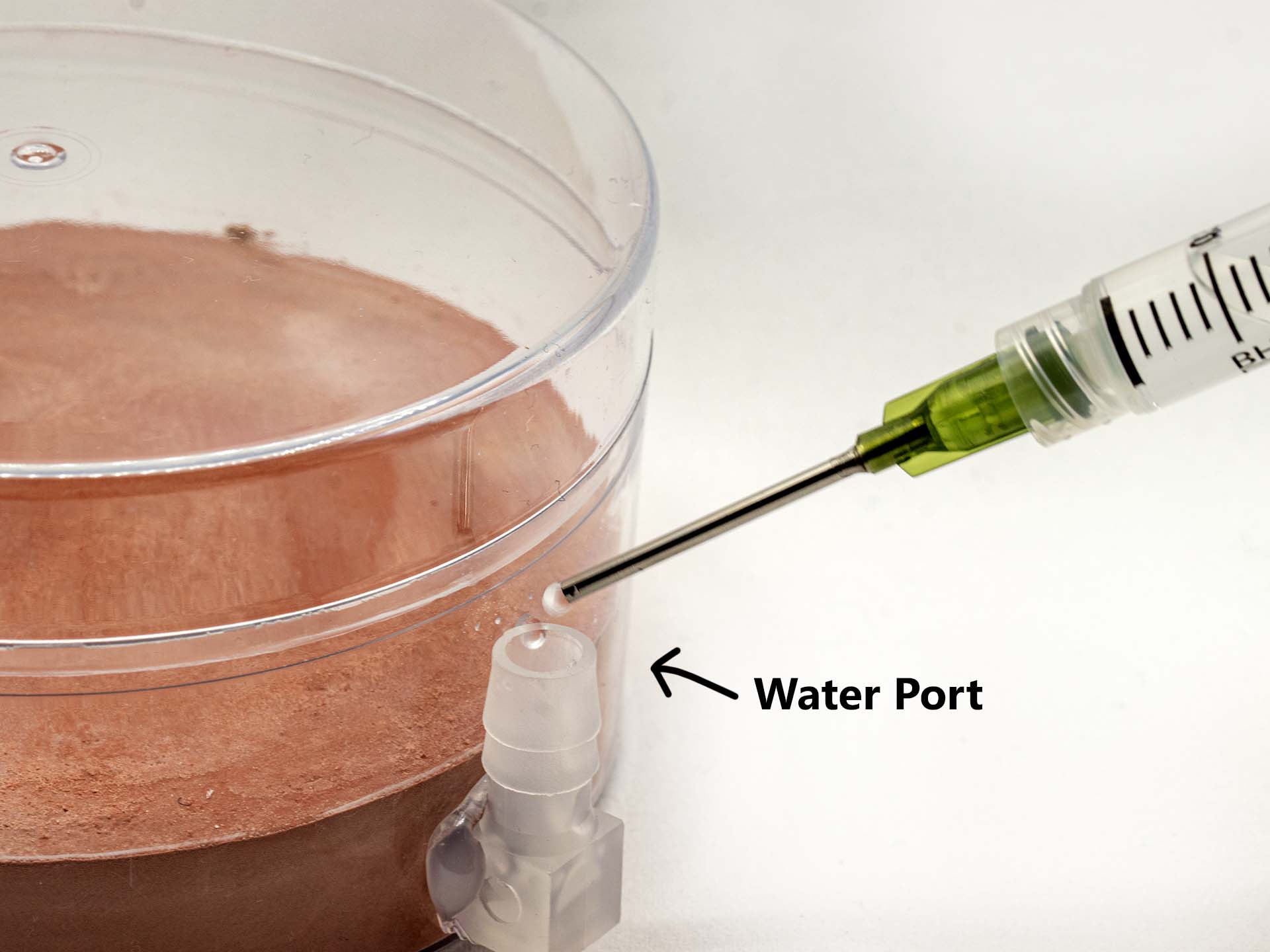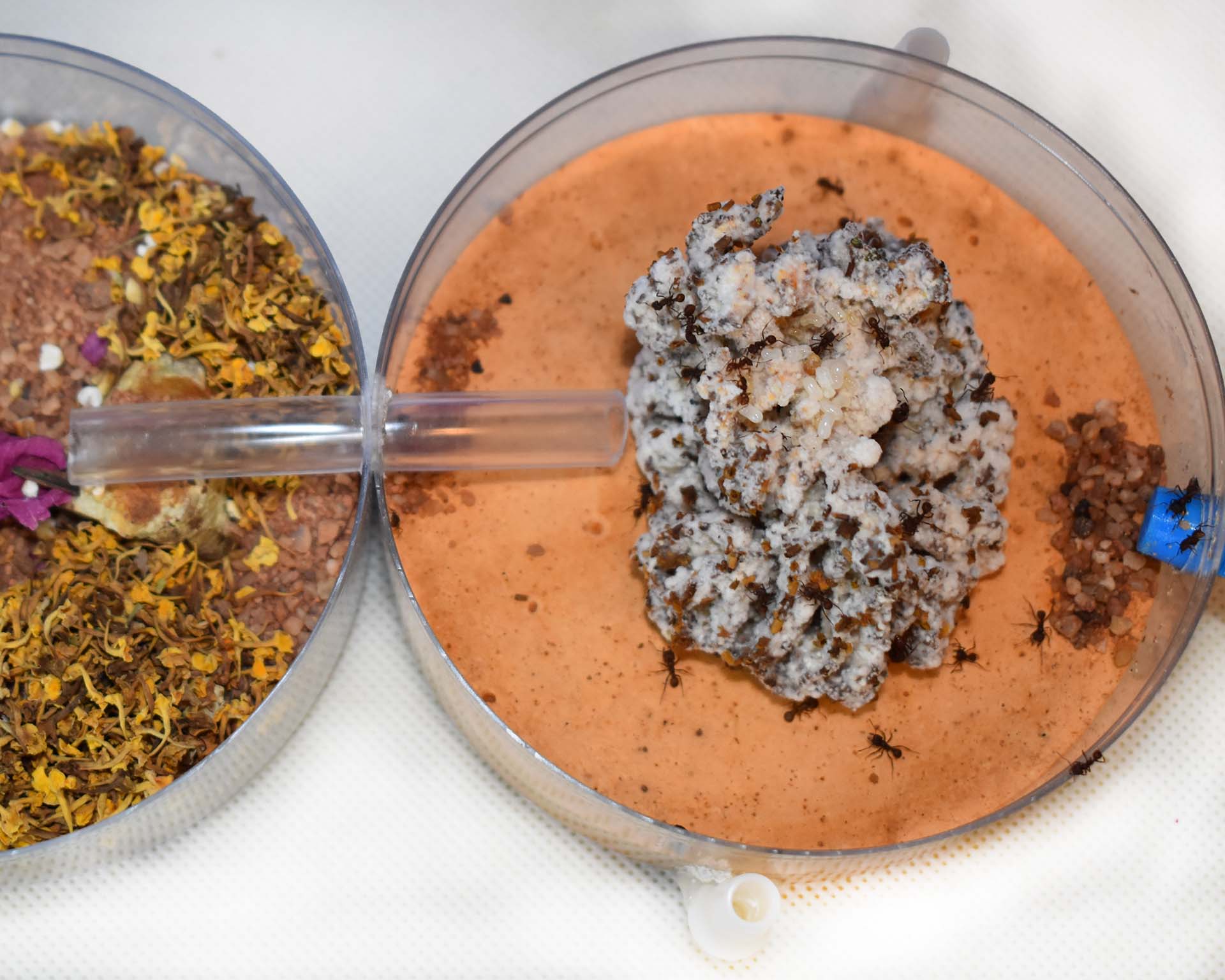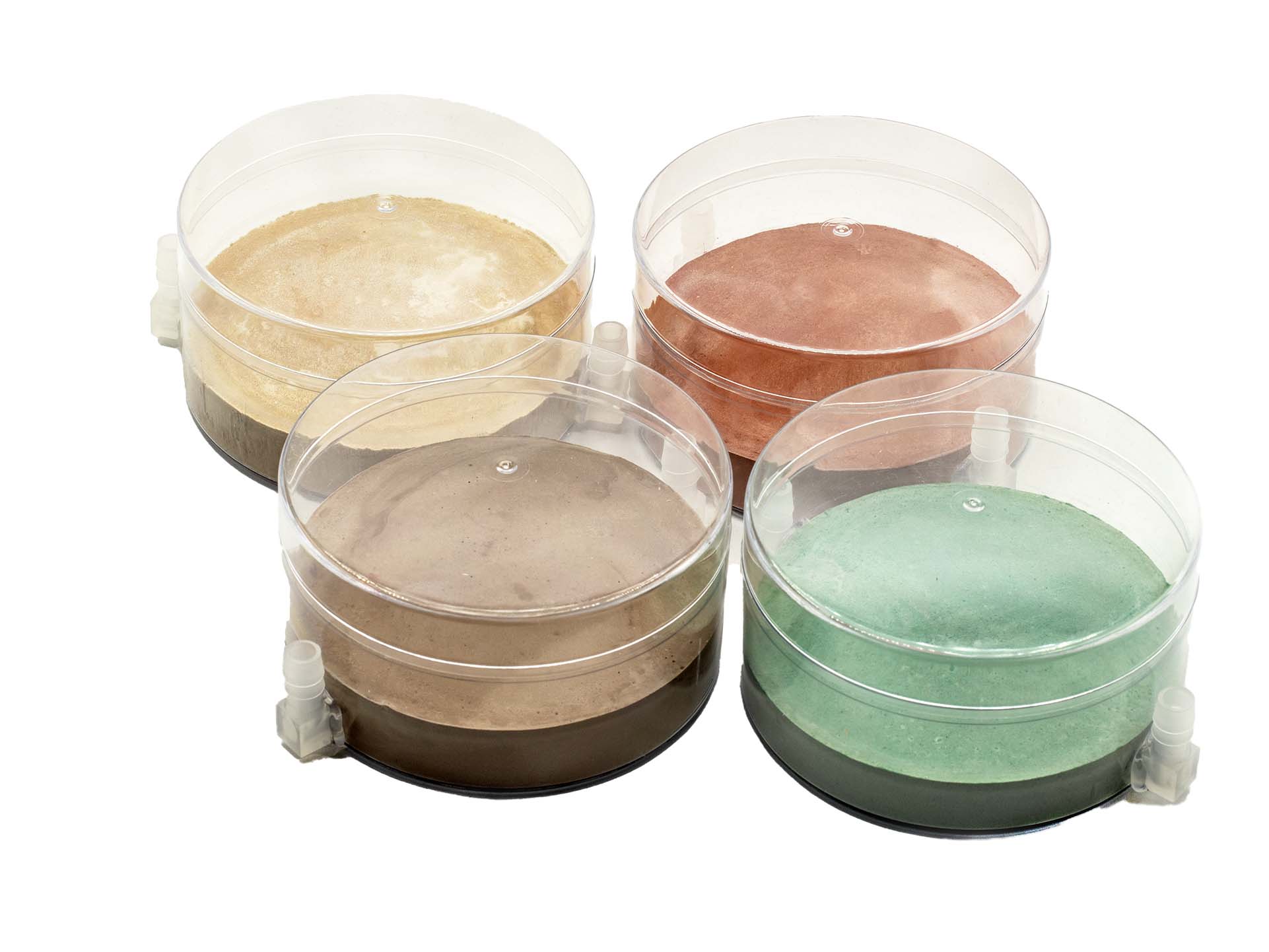Medium Acro Pod
$24.99
The Medium Acro Pod is an ideal habitat for your Acromyrmex leafcutter ants, designed with convenient water ports for easy hydration and maintenance.
Product Description
This plug-n-play style nest is well suited to leafcutter species that enjoy hanging their fungus from the ceiling. The species of leafcutters we sell is called Acromyrmex versicolor and these nests are designed for them. With A. versicolor, when most of space in their current pod is full with fungus, it’s time to add another pod.
Hydration
The hydration ports allow for managing the moisture levels within the nest to create an optimal habitat for the fungus and the ants. Controlling humidity is crucial for the fungus’ and ants’ well-being and helps simulate their natural environment, allowing them to thrive and build their colony comfortably. A syringe with a blunt tipped needle is included for adding water to the hydration port. Slowly insert water with the blunt-tipped syringe into one of the side ports at the base of the nest.
How Often and How Much Water?
This depends on the fungus needs and the humidity requirements of the species of your leafcutters. Most likely, you will need 100% humidity and this will be a weekly hydration fill. If your leafcutters are mostly taking in fresh flowers and leaves, you may not need to refill it that often. You can tell if the nest needs water by the coloring of the gypsum cement. If it is not a dark color and it is noticeably lighter weight that normal, it’s time for a refill. After the refill, the gypsum will turn a darker shade, and the nest will be heavy, indicating it is holding enough moisture. The top layer of the gypsum should not be visibly moist — the fungus should not come in direct contact with water or it will be damaged.
Note: If you aren’t sure how much water to add, take your time and add 1ml and wait several minutes to observe the gypsum before adding more. If the surface appears wet it’s time to stop adding water.
What if I over water the nest?
It’s OK! It happens to everyone at some point. You will see a slick surface or water droplets on the top of the gypsum. Direct contact with water will damage the fungus but it’s probably OK. You can remove excess water by placing the blunt-tipped syringe into the water ports and pulling up on the plunger. The quickest way to remove water is to turn the nest upside down to let the water drain out of the water ports. This will of course mess up the fungus but the ants are experts at home repairs and will have it fixed up in no time. Just make sure that the lid is secure before turning it over.
What do I do if I see mold inside of the nest?
This should not happen unless contaminated water was added or if the ants are not removing old plant matter. If it looks like the mold is growing on the surface of the gypsum, open the lid and with long tweezers, wipe the nest surface with a clean cotton ball. Do not add anything to the cotton ball that could harm the ants.
How do I apply heat?
Don’t. It will kill the fungus.
Share your thoughts!
Let us know what you think...
Only logged in customers who have purchased this product may leave a review. Log in now






Sebastian/Arizona Ant keeper (verified owner) –
I highly recommend this pod as My acro colony really loved it I highly suggest you getting this nest once your colony as filled one pod and for the reason, I’m telling you that it’s because this pod seems small but in reality it’s big but besides that this is a really good product my colony instantly put fungus in there and after twoweeks, this is how much fungus my colony has in there
Thank you, Ant Gear
Upvote if this was helpful (1) Downvote if this was not helpful (0) Watch Unwatch Flag for removal
Derek –
highly recommend for leafcutters!
Upvote if this was helpful (0) Downvote if this was not helpful (0) Watch Unwatch Flag for removal